The 3D Printed Gun: An Increasing Threat?
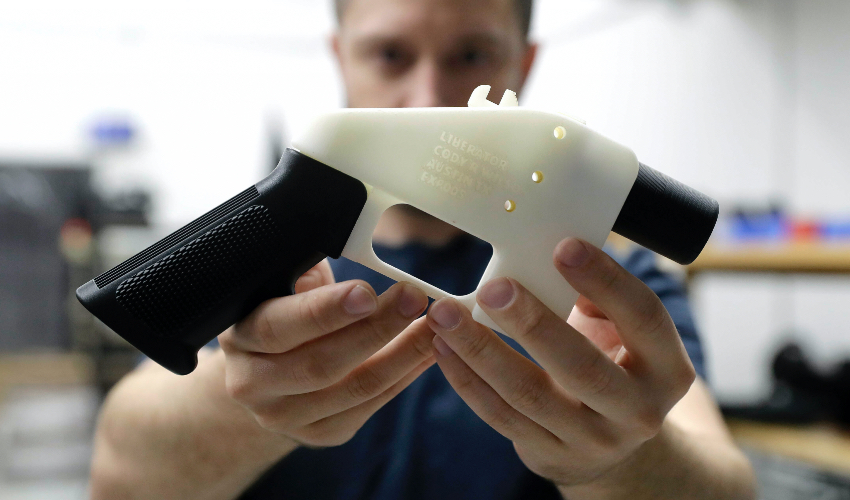
In March 2024, the United States National Library of Medicine (NLM) published “The Emergence of 3D-printed Firearms: An Analysis of Media and Law Enforcement Reports.” The report gathered data on 186 cases involving 3D printed firearms and parts, 92% of which took place in either North America, Europe, or Oceania. Their most striking finding? A significant, sharp increase in reported cases since 2021. The discovery of this increase is corroborated by the growing number of headlines on 3D printed guns.
Just this October, in one high-profile case a man in Indiana was sentenced to seven years in federal prison for 3D printing ghost guns (untraceable guns without a serial number) and “Glock switches” (parts that convert a semi-automatic pistol into a machine gun). Unfortunately, this instance is more than an isolated incident. The proliferation of 3D printed firearms has become a global phenomenon, and government bodies in the United States, Canada, Australia and Europe, among others, have begun addressing the problem.
So, how did the story of 3D printed guns begin? What 3D printing technologies are used? Is the threat of 3D printed guns growing? What will this issue look like in the future?
Cody Wilson Invents the 3D Printed Gun
It all began in 2012 when Cody Wilson revealed his plan to make firearm design open-source so that anyone could print a weapon at home. A self-proclaimed crypto-anarchist, he was a law student at the University of Texas at the time. However, he left the university the next year to commit, apparently, full-time to the development and distribution of 3D printed guns. For this purpose, he founded Defense Distributed, with an online platform called Defcad. Wilson identifies it not as a tech business but as a “nonprofit defense organization” whose purpose is to fight against government censorship.

Cody Wilson
In 2013, the very first CAD (computer-aided design) gun file became available online, which one could download for free anywhere in the world. The digital file immediately went viral, with over 100,000 downloads in just two days. The US Government then demanded that Defense Distributed remove the file from their site.
An Ongoing Legal Battle in the US
Several lawsuits between Cody Wilson and the US Government followed, lasting until 2018 when the Trump administration legalized 3D printed guns. The same year, Wilson was charged with sexual assault of an underage girl and had to step down from Defense Distributed. The organization did not cease to exist without Wilson, however, and after a 2019 plea deal, he rejoined the company.
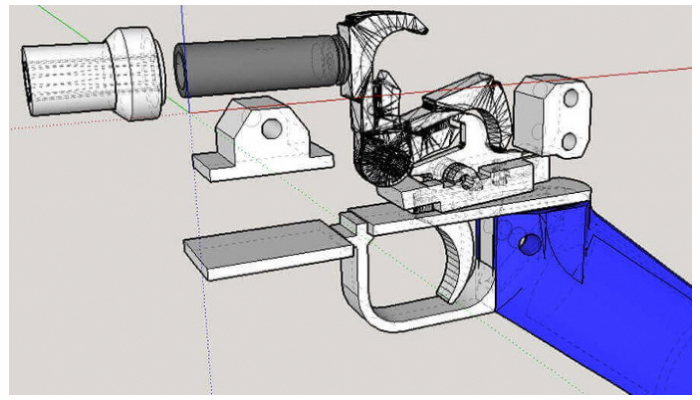
An example of a 3D printed gun design.
Also in 2019, a federal judge in Seattle ruled the legalization of 3D printed firearms illegal, and thus temporarily blocked Defcad again. In response to that blockage, a network of gun activists formed Deterrence Dispensed. This group is different from Defense Distributed in that it is entirely decentralized, making it more challenging to stop. However, Defense Distributed and Deterrence Dispensed share the same ideology based on the Second Amendment of the US Constitution: “A well-regulated Militia, being necessary to the security of a free State, the right of the people to keep and bear Arms, shall not be infringed.” This Amendment is often cited by American gun activists as a testament to their right to possess guns.
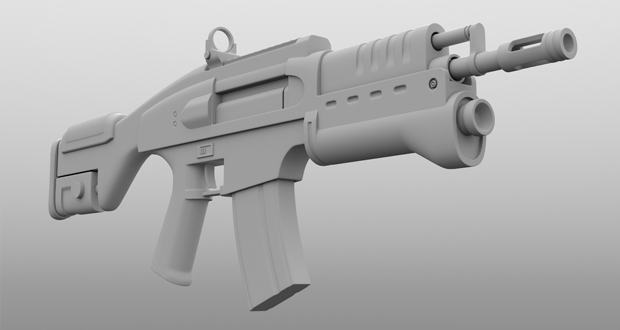
3D model of a firearm.
The legal battle between gun activists and the US Government raged on, and in early 2020, a coalition of 20 states and the District of Columbia filed a lawsuit against the federal government over the Trump Administration’s decision to allow sharing 3D printed gun files on the internet. In 2021, the US Department of Justice (DOJ) proposed updating firearm definitions to include unserialized privately made firearms, including those that were 3D printed. This way, these weapons could be subject to the same regulations as traditional firearms.
The DOJ’s rule came into fruition in 2022, but in 2023 a federal district court judge ruled against the regulation. After several appeals, the decision landed in the Supreme Court. Finally, on October 8th, 2024, the case was argued. While a final decision has not been determined, the justices seemed open to siding with the regulation. In the meantime, the rule remains in effect, meaning that 3D printed firearms should be regulated the same as traditional ones.
Types of 3D Printed Firearms
Part of the danger of these guns, and the reason for this regulation, is that they are untraceable. That’s why 3D printed firearms are often referred to as “ghost guns,” because they don’t have a commercial serial number or any other marks that could help identify the owner. The Liberator .380, designed and released by Cody Wilson in 2013, was the first 3D printed plastic gun. It was a single-shot pistol made with Fused Deposition Modeling on a Stratasys Dimension SST 3D printer. The Liberator is close to being a wholly plastic gun, although it still requires a steel nail that serves as the firing pin. An essential characteristic of a plastic gun—and a reason to fear it—is that it does not trigger metal detectors.
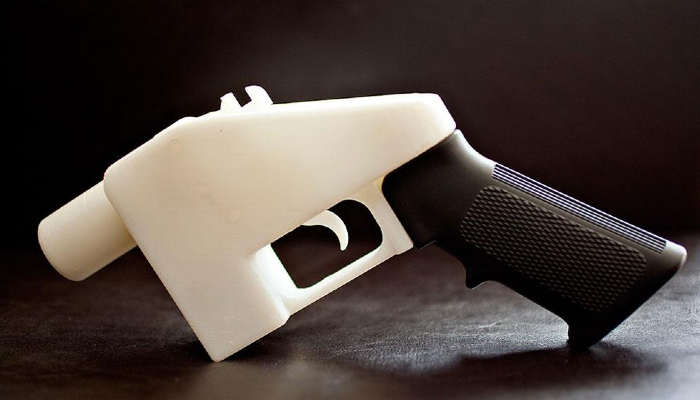
The Liberator, the first 3D printed gun.
More recently, a new model for a 3D printed gun entered the market, its first designs published in 2020 by Deterrence Dispensed. Named the FGC-9 for “F*** Gun Control,” this weapon is a semi-automatic, pistol-caliber carbine. The New York Times found uses of the FGC-9 in at least 15 countries. In a video report from September 2024, they stated that these weapons have been used by criminal organizations in Australia, Spain, the UK and France, and notably, an anti-government rebel group in Myanmar. What’s uniquely threatening about the FGC-9 is that none of the parts of the gun are regulated, as opposed to many other 3D printed firearms that have some components that are. This means that the FGC-9 can be printed from scratch.
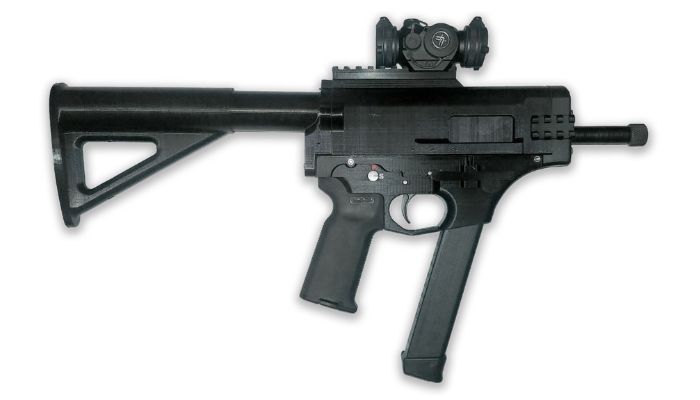
The FGC-9. (Photo credits: JStark1809 / Deterrence Dispensed)
While the Liberator, and now perhaps the FGC-9, might be the best-known 3D printed gun made from plastic, stronger and more reliable guns can be made using metal 3D printing. For example, the Solid Concepts replica of the Browning 1911 handgun was the first 3D-printed metal gun. Solid Concepts was an AM company based in California, but Stratasys acquired it in 2014. Their 3D printed metal handgun was built using Direct Metal Laser Sintering (DLMS) technology and could fire more than 600 bullets without damaging the gun.
Metal guns are much more reliable than plastic ones, but they are also quite out of reach for the average person. The metal printer used to create the Solid Concepts 1911 weapon cost between $500,000 and $1 million when created (November 2013), and the gun itself was sold for $11,900 apiece.
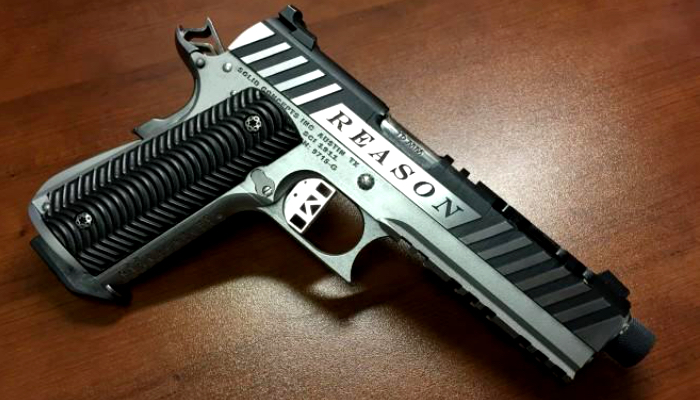
The first 3D printed metal gun by Solid Concepts.
Regarding weapons created through metal 3D printing, the technology and models have significantly evolved since 2013 when Solid Concepts first introduced its 3D-printed firearm. Today, it is possible to print fully functional assault rifles, light machine guns, sniper rifles, and their corresponding accessories using a metal 3D printer. This process is effective, as these weapons are fully operational.
The Technology Behind 3D Printed Guns
When discussing the actual process of 3D printing a firearm, it is essential to note that a 3D printer cannot create a complex mechanism like a functional gun all in one piece. Thus, the individual elements are all printed separately and later assembled manually. It is a rather lengthy process, and not an easy one either. However, it is possible to purchase kits for assembling these weapons, so only assembly is required.
To manufacture a gun with an FDM 3D printer, one can choose between several types of thermoplastics. PLA or ABS are the most commonly used, but they are not perfect for fabricating a functional gun. PLA is softer, so it typically deforms quickly. ABS is more complex, but it will crack and break rather than deform.

The Liberator before being assembled.
Sometimes, only firing one bullet can break the thermoplastic. In other cases, well-designed 3D printed guns can withstand shooting a few thousand rounds. As 3D printing technology advances, the quality of 3D printed guns has advanced too, with a variety of new materials being released.
Debate and Controversy
Naturally, there is conflict between pro-gun and gun control activists, which is reflected in the ongoing legal battles in the United States. Some fear the untraceable nature of this weapon, which could make it difficult to identify a shooter. Others object to the fact that the makers and owners of 3D printed guns are not subject to background checks. A person can 3D print a firearm even if they are mentally ill, a felon, or underage, qualities that would usually disqualify a person from owning a gun.
Plastic 3D printed guns also pose a safety threat because, depending on the sensitivity of the machine, they may not trigger metal detectors. This makes them harder to identify through traditional security measures. For instance, in 2013, three Daily Mail reporters 3D printed a Liberator pistol on a 3D printer that cost less than $2,000 and boarded a Eurostar train with it. Since the gun was plastic, metal detectors weren’t set off, and the men smuggled the disassembled gun by putting parts in each of their pockets. The Liberator was then reassembled in the train toilet cabin. This experiment proves how easy it is to smuggle deadly weapons, even to places with relatively high security, such as airports and train stations.

A Daily Mail reporter is holding the 3D printed gun in a Eurostar train. (Photo Credit: The Daily Mail)
While 3D printed firearms clearly create security risks, there are groups of gun enthusiasts whose aim is to use these weapons recreationally. In 2020, a group of such people formed the Gun Maker’s Match (GMM) in Pennsylvania, a now annual shooting contest where contestants use their own 3D printed firearms.
According to GMM’s website, “Making your gun is a fun, educational activity for firearms enthusiasts.” In a blog post, the organization referred to its work as exemplary of the “other side” of the story: “hobbyists having fun and exercising their rights responsibly.”
Are 3D Printed Firearms and Parts Becoming More Common?
So, the NLM reported a huge uptick in reported cases with 3D printed firearms and parts since 2021. What could be the reason? Well for one, the report identified 3D printing guns as a “cost-effective and reliable alternative to conventional firearms” with motives for their production varying between political, economic, social, cultural or historical reasons. Accessibility seems to be one reason for the wide appeal: people don’t need a background check to make these, and according to the NLM’s report, producers use mostly entry-level equipment and do not need high-end material. Background checks are usually necessary to make sure guns don’t end up in the wrong hands, even if they are not a foolproof method for ensuring security.
What’s also interesting is that the NLM reported that 3D printed guns seem to be growing in popularity “in various regions, irrespective of the severity of firearm regulations and culture, and not just as a last-resort option.” The report said that the trend “reflects their broad appeal and indicates a demand that cuts across diverse regulatory landscapes.” Therefore, no matter what the rules are in a given place, 3D printed firearms seem to be increasingly present.
However, it’s important to keep in mind how the laws affect the increase in 3D printed guns in the US. In 2022 in a press release, the White House stated that “20,000 suspected ghost guns were reported as being found by law enforcement in criminal investigations in 2022—a tenfold increase from 2016.” However, 3D printed guns were more or less legal from 2018 to 2022, which could partially explain their increased presence.
Regardless, the NLM report claims there’s a potential that 3D printed firearms will become more widespread, gaining more police attention. This will likely be the case because as the technology for 3D printing guns advances, law enforcement agencies will have to keep up. While it’s true that 3D printed firearms could be used for recreation, the headlines suggest that they’re more often used for violence, underscoring the need for proper legislation and regulation. For more, read NLM’s report here.
What do you think about the 3D printed gun issue? Let us know in a comment below or on our Facebook and Twitter pages! Sign up for our free weekly Newsletter, all the latest news in 3D printing straight to your inbox!








Pistolas caceras y de metal, se pueden hacer con diferentes herramientas y mas seguras que con una impresora 3D
lo que en este articulo no se hace referencia es a la munición, que no es poca cosa.
cualquiera con conocimientos y municiones podría hacer mas daño, sin tener que pasar por la impresión 3D
Ademas la impresión 3D, todavia no es tan fácil como manejar un lavaropas o un microondas, Hay que tener conocimientos específicos.
Ademas para que halla un disparo, se necesitan ambas cosas, PISTOLA y MUNICIONES.
17 centimeter bullet? I think you probably mean .17 inches.
If the liberator requires a steel firing pin then that should perhaps be detectable by metal detector or mm wave body scan or by x-ray inspection of luggage. But I guess a firing pin might not be recognized as part of a gun.
But conventional ammunition also contains metal (and powder and primer which can be detected in very small quantities, e.g. residue on the hands of a person who has shot a gun recently) and ammunition is easily recognized for what it is.
A point you didn’t explicitly raise is that in the US individuals are permitted to manufacture firearms for their own use. That includes plastic guns, metal guns, and manufacture by any means, additive manufacturing, machining, etc. It’s worth raising because many people assume that you have to be licensed to manufacture firearms, and therefore assume that people who print plastic guns are commiting a felony. That adds a tinge to the whole topic, suggesting that people who help others make guns are deliberately and purposely helping people to commit a felony.
More anti-3D fearmongering.
I had to wade through almost the entire article before encountering a half-fact: “3D printed guns can’t even function well enough to become widely used – most of the time the gun just explodes in the user’s hands, breaks, or deforms.”
The full truth is that NO plastic 3D firearm can fire without exploding and/or losing almost all the bullet’s velocity.
The lowly .22 generates 24,000 pounds per square inch (psi) of chamber pressure, and the common 9mm generates around 35,000 psi. No plastic barrel can contain those pressures. Any 3D pistol would need a steel barrel and a steel firing pin. And that would be detectable.
The fear of 3d-printed guns is irrational.
Proof that the author knew this: NOT ONE PICTURE IN THIS ARTICLE SHOWS A 3D GUN BEING SHOT!
It is important to address the challenges posed by these untraceable weapons to ensure public safety and effective regulation!